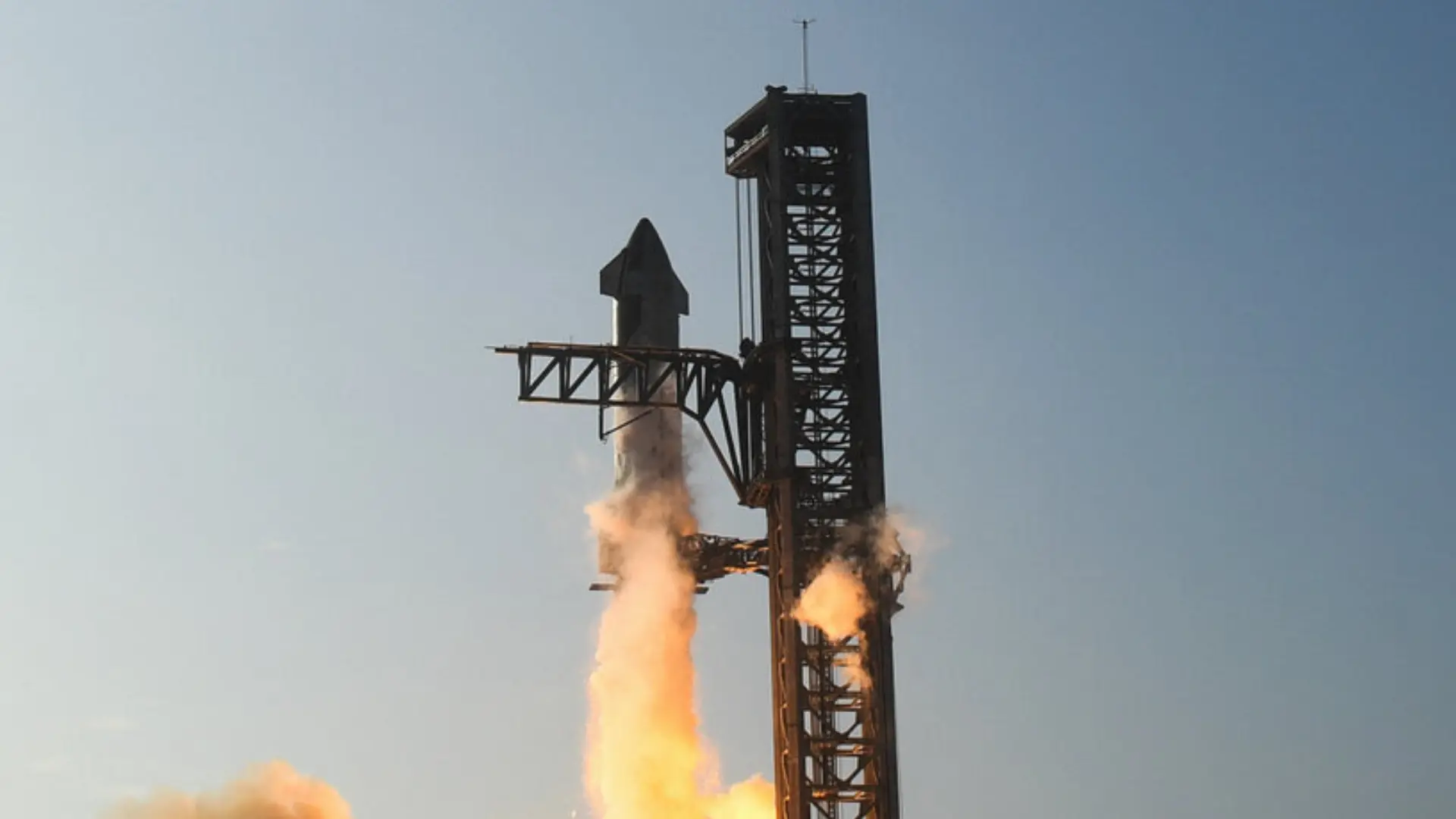SpaceX successfully completed its most daring test flight to date with the massive Starship rocket on Sunday, catching the returning booster at the launch pad using mechanical arms.
The nearly 400-foot-tall (121 meters) Starship, launched without a crew, took off at sunrise from the southern tip of Texas near the Mexican border. Like the previous four Starships that had failed in various ways after launch, this one arced over the Gulf of Mexico. However, unlike the past attempts, which resulted in explosions or water landings, this latest mission achieved a major milestone without any catastrophic failures.
SpaceX’s Giant Mechanical Arms Catches Starship Rocket Booster
For this test, SpaceX founder and CEO Elon Musk increased the difficulty and risk, aiming to return the first-stage booster to the launch pad. Seven minutes after liftoff, the 232-foot (71 meters) booster was successfully caught by the launch tower’s massive metal arms, known as “chopsticks.”
Musk excitedly announced on X (formerly Twitter), “The tower has caught the rocket!! Science fiction without the fiction part.”
SpaceX employees celebrated the moment with cheers and fist-pumping as the booster gently settled into the arms of the launch tower.
SpaceX commentator Dan Huot, speaking from the launch site, described the event as “magic,” saying, “I am shaking right now.” His colleague, Kate Tice, at SpaceX headquarters in California, added, “Folks, this is a day for the engineering history books.”
Later, the empty spacecraft that launched atop the booster successfully landed in the Indian Ocean, completing a controlled descent as planned. The flight director had to make a real-time decision about whether the conditions were right for the landing, ensuring both the booster and launch tower were in stable condition. If not, the booster would have been ditched in the Gulf of Mexico as with previous attempts. Fortunately, everything went smoothly.
The spacecraft, made of stainless steel, continued its journey around the world after detaching from the booster. Cameras on a buoy in the Indian Ocean captured the fiery splashdown as the booster hit its target, though it wasn’t intended to be recovered during this demonstration.
Reflecting on the achievement, Huot remarked, “What a day. Let’s get ready for the next one.”
View this post on Instagram
SpaceX’s Improved Software
The success follows a June flight where pieces came off the Starship at the end. Since then, SpaceX improved the software and upgraded the spacecraft’s thermal shield.
For nine years, SpaceX has been recovering first-stage boosters from its smaller Falcon 9 rockets, typically landing them on ocean platforms or concrete pads away from the launch site. This process has significantly reduced costs and accelerated launch rates. Musk envisions a similar reusable system for the Starship, which features 33 methane-fueled engines on the booster, making it the largest and most powerful rocket ever built.
NASA has already contracted SpaceX to use Starship for future lunar missions, including landing astronauts on the moon later this decade. SpaceX also plans to use Starship for crewed missions to the moon and Mars in the future.























